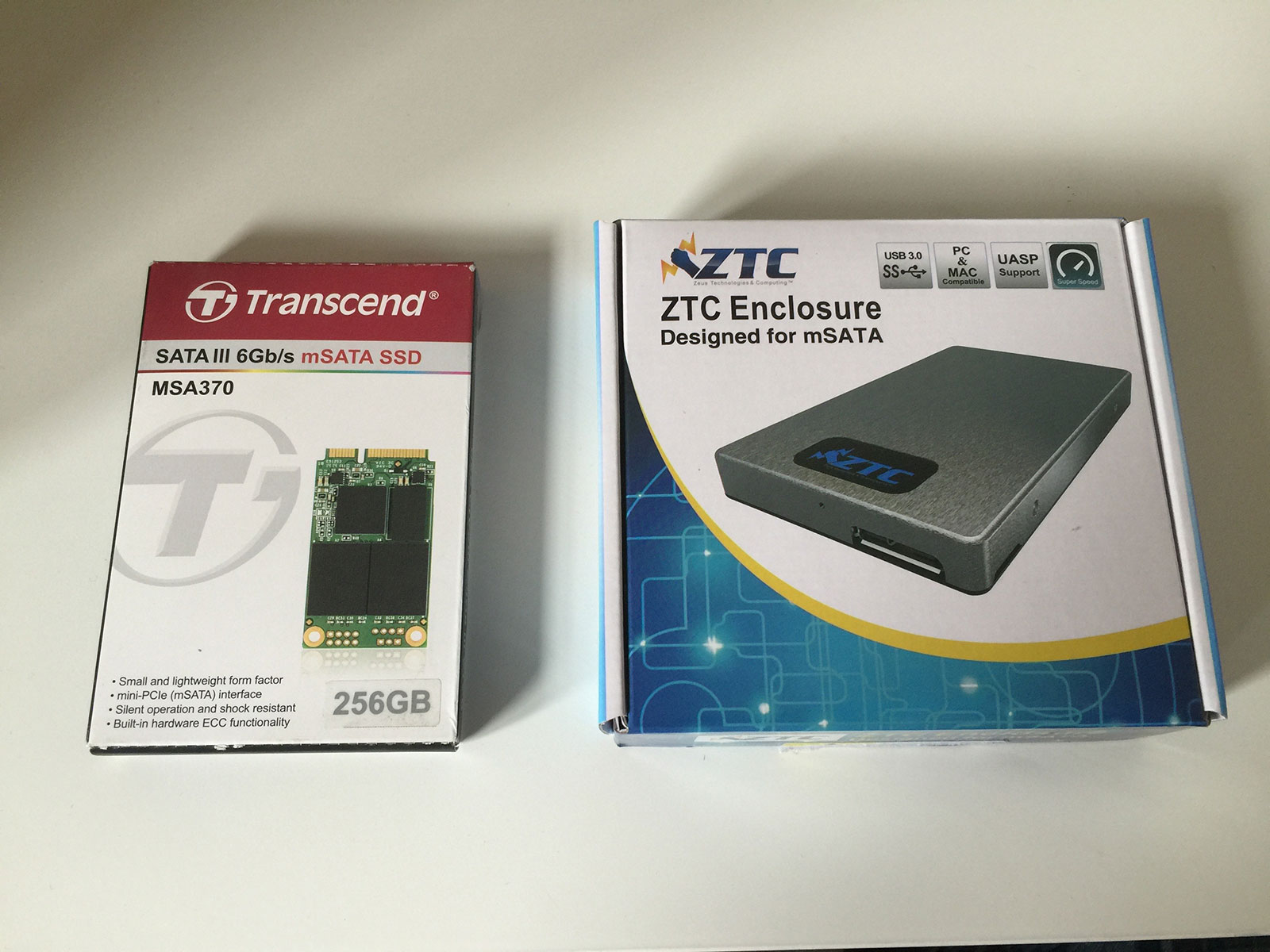Using an SSD with the Xbox One
I love my Xbox One but the one big issue I have with it is loading times. This is mainly due to the spinning hard drive1 inside and the huge amount of data it is expected to push for some of the bigger open world games like GTA V or The Witcher 3. In an effort to speed this up (and because the 500GB hard drive is almost full), I’ve upgraded my Xbox One with an external SSD2.
Process
The process is actually incredibly simple. You’ll need the following two things:
-
An mSATA SSD that is at least 256GB in size. I went for a 256GB model from Transcend.
-
A USB 3.0 enclosure for the SSD. You’ll want one that has UASP support like this one from ZTC. Do not get one from Sabrent3!

Once you have these, it’s a simple case of plugging the SSD into the enclosure and attaching the USB cable. This leaves you with an incredibly small device which can then be plugged into any of the 3 USB 3.0 ports on the Xbox One:

As soon as you turn the Xbox One on, you’ll be alerted that a new media device has been attached and given the option to format it for games and give it a name. When you have done this, you’ll be able to copy games and apps by going to their individual storage settings and choosing the move option.
Results
I’ve only put 3 games on the SSD so far but they are all dramatically faster for loading and saving. I’ve put a few benchmarks below:
GTA V
This is by far my slowest game. Testing was from a cold startup (which automatically loads your previous save point) to the point at which the game was playable:
- Internal HDD - 2 minutes 31 seconds
- External SSD - 1 minute 9 seconds
SSD produces a 60% reduction in loading time.
The Witcher 3: Wild Hunt
The first test was from a cold start to the opening menu.
- Internal HDD - 40s
- External SSD - 28s
SSD produces a 30% reduction in loading time (although that seemed to be as quick as it could go due to the logos and publisher videos at startup).
The second test was from resuming a game from the main menu.
- Internal HDD - 1 minute 21 seconds
- External SSD - 46 seconds
SSD produces a 57% reduction in loading time.
LEGO Jurassic World
For this test, I timed from the loading of the last save point on the main menu.
- Internal HDD - 37 seconds
- External HDD - 37 seconds
It looks like LEGO Jurassic World’s loading sequence is limited to 37 seconds in order to show 3 pieces of dinosaur trivia at 12 seconds each. Playing through the game though, the time it takes to start a story and fast travel to new locations seems much faster.
Overall, it seems that the SSD offers around a 55-60% reduction in speed unless there is something specifically limiting the load time (i.e. videos or placeholder content). I’m planning on just using the external drive for single player games at the moment as there isn’t much benefit in loading the Titanfall or Halo online textures any quicker when the limiting factor is the broadband connection along with everyone else. For me, the SSD option is definitely worth the cost for the big open world games that have a heavy loading time penalty when you die (looking at you GTA V) - it has also increased my overall storage space by 50% which is useful when some games are in the 100s of GB.
-
Gross! One day I’ll look forward to telling my kids we used to store data on discs spinning at 7200rpm - it’ll be baffling to them. ↩︎
-
As far as I’m aware, doing it internally would be slightly faster but would definitely invalidate any warranty! ↩︎
-
The first enclosure I got was the EC-UKMS from Sabrent which was advertised as having UASP. It doesn’t and led to a 70% decrease in speed over the internal HDD with a load time of over 4 minutes for GTA V! This is the first product I’ve actually left a review for on Amazon as the title and images are blatent lies. ↩︎